#salt satyagraha
Text
Aruna Asaf Ali
Aruna Asaf Ali was born into a Bengali Brahmin family on July 16, 1909. She grew up during a time of great political upheaval in India. Despite societal opposition, she married Asaf Ali, a Muslim leader in the Congress, in 1928, marking the beginning of her active involvement in India's freedom movement.
Following her marriage, Aruna joined various Congress activities, including the Salt Satyagraha, where she was arrested but remained undeterred. She gained widespread recognition for her brave act of hoisting the Congress flag during the Quit India Movement in Bombay.
Even after India gained independence, Aruna continued her tireless efforts for social welfare. In 1954, she founded the National Federation of Women and later served as the first Mayor of Delhi in 1958. Additionally, she established a newspaper to amplify her voice for social change.
Aruna was renowned for her staunch socialist beliefs and unwavering courage in advocating for change. Her contributions to the nation were recognized with several awards, including the prestigious Bharat Ratna in 1997.
Throughout her life, Aruna exemplified the importance of standing up for one's convictions, regardless of the challenges faced.
#aruna asaf ali#indian national federation of women#indian history#post colonialism#indian independence#quit india movement#indian congress#salt satyagraha#women in history#history#indian women in history
5 notes
·
View notes
Text
進撃の巨人 × History






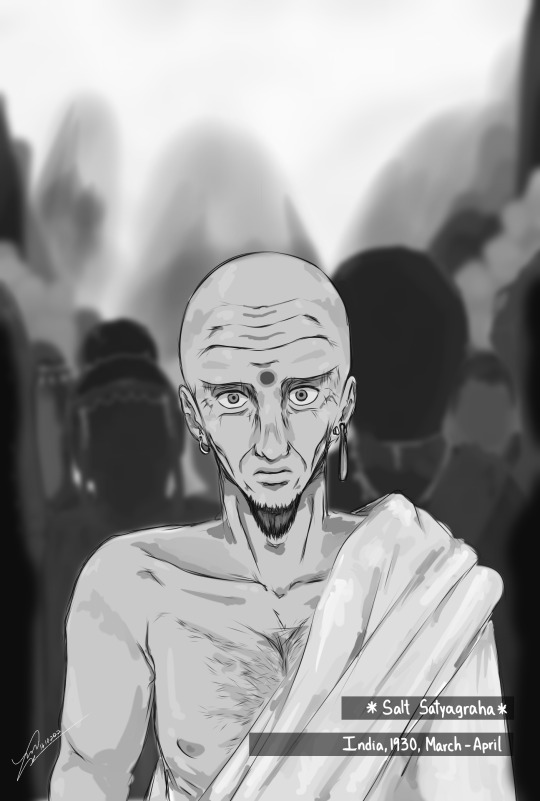
#Armin Arlert#Mikasa Ackerman#Eren Jaeger#Historia Reiss#Hange Zoë#Keith Shadis#Onyankopon#進撃の巨人#WWII#D-Day#Sovietic Union#URSS#global history#racism#Ghandi#Hiroshima#Nagasaki#nuclear bomb#Salt Satyagraha#Martin Luther King
14 notes
·
View notes
Text
Salt Satyagraha: The Civil Disobedience Movement That Changed India
Salt Satyagraha was a civil disobedience movement led by Mahatma Gandhi in 1930 against the British salt tax in India. The movement was a turning point in India’s struggle for independence and helped to galvanize the Indian National Congress and the Indian people against British rule. This article explores the history of the Salt Satyagraha and its significance in the Indian independence…
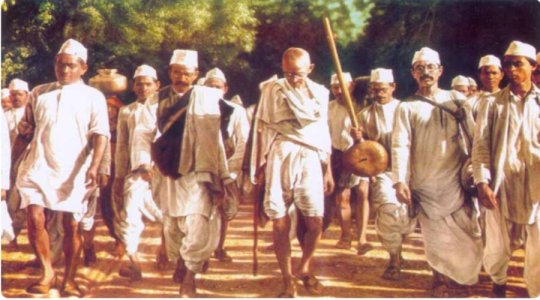
View On WordPress
#apnaran#अपनारण#ब्लॉग्स#blogs#education#india#litlikesunlight#ADMIN#apna ran#DANDI MARCH#GANDHI JI#Indian National Congress#Salt Satyagraha
3 notes
·
View notes
Photo

“Gandhi’s Successor,” Toronto Star. May 12, 1930. Page 1.
---
Mme. S. Naidu, former president of National Congress, who following the arrest of Abbas Tyabji, to-day, now becomes leader of the Indian independence movement.
#sarojini naidu#indian national congress#indian independence movement#indian freedom struggle#salt march#salt tax#salt satyagraha#anti-imperialism#british empire#british raj#british india
0 notes
Text
The way how some people are just not aware of what the British Monarchy did in the name of 'trade' and 'civilization'..... Genuinely asking, what the hell is going on in your history classes?
When I was 10 years old, I learnt about the Mughals invasion, how the British set foot into India to trade spices and then established British India in the name of 'civilization'.
When I was 11 years old, I heard about the divide and conquer strategy, the livelihood of workers in plantations, how various handloom and weavers went out of work and starved to death.
When I was 12, I learnt about the Nizams cruel rule over my birthplace, Bhagath Singh getting hanged, Jallianwalabaagh massacre, cops torturing common people, Bengal partition, 1857 revolt, the salt satyagraha, Quit India movement, Civil rights, Independence, division of states and the Partition.
When I was 13, I learnt about the great depression, 2 world wars where the British just sent most of Indians to fight, the diary of Anne Frank, dictatorships and nuclear weapons.
When I was 14, I learnt about the cold war where two superpowers had the strength to topple governments and establish new ones, the CIA, the Arab spring and the horrible exploitation of natural resources of Africa by MNCs and Dutch shell company.
When I was 15, I learnt about the history of various other nations like China, France, Nigeria, America, Congo, Russia, Britain, Ireland, etc. and also various policies and acts introduced by the British government in India like the 1935 act and arms act.
I remember looking at an illustration of 200 persons from Africa cramped into a tiny ship on their way to America. I remember the illustration of a moving train, where people took cover under dead bodies to avoid bloodshed during the partition of India and Pakistan. I remember listening to Martin Luther King's speech.
Was this not written in your history books? Did you not see the museum displays where the stolen goods are proudly shown around? How the fuck are you still ignorant in the age of internet is beyond my comprehension.
#i am frankly sick of some people saying they just recently got to know why colonialism is bad#uk#british#anti colonialism#anti imperialism#queen elizabeth#ding dong the witch is dead#india#desi
3K notes
·
View notes
Text
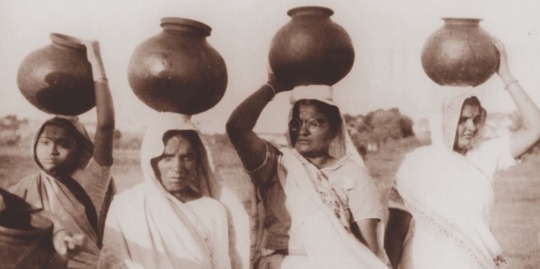
Salt Satyagraha (Gandhi’s salt march), c.1930
8 notes
·
View notes
Text
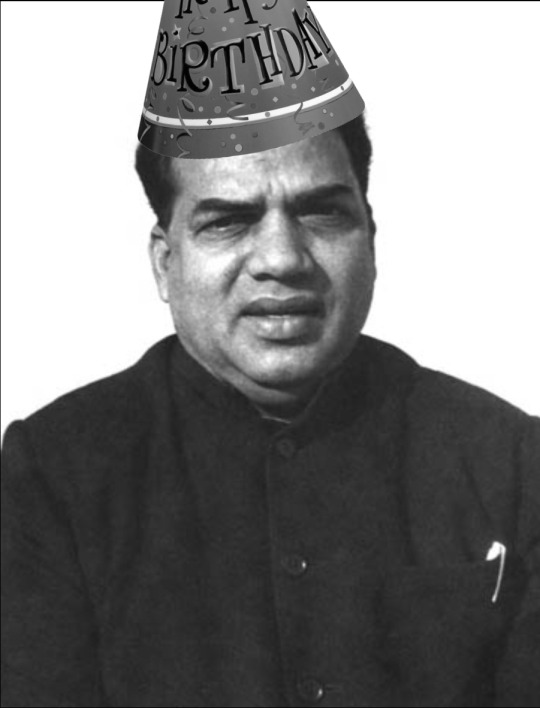
Happy birthday, A.K. Gopalan! (October 1, 1904)
A prominent Indian Marxist, Ayillyath Kuttiari Gopalan was born in Kerala and worked as a teacher as the Indian independence movement was beginning to gain traction. He began his activism in the Khilafat Movement and joined the Indian National Congress in 1927. He was arrested for participating in the salt satyagraha in 1930, and became a socialist in prison. He joined the Communist Party of India when it formed in 1939, and led protests against British colonial rule and the caste system. After independence, Gopalan was one of the first communists elected to the Lok Sabha of India. In 1964, Gopalan led a split in the Communist Party of India over the CPI's support for the Indian government in the Sino-Indian War. Gopalan and his fellow dissidents formed a new party, the Communist Party of India (Marxist). He remained in the Lok Sabha until his death in 1977, and he continues to have a large legacy in his native Kerala, where his party still holds power.
123 notes
·
View notes
Text
THE STORY OF INDIA'S 'CIVIL DISOBEDIENCE MOVEMENT OF 1930', BEGINNING WITH THE 'SALT MARCH', BREAKING OF BRITISH SALT LAWS, & THE 'SATYAGRAHA' (FORCE OF TRUTH & LOVE') MOVEMENT CULMINATING IN THE BURNING OF FOREIGN CLOTH !
In the last few days of Dec 1929, M.K. Gandhi was appointed head of the Congress party's 'Poorna Swaraj' or 'Complete self rule' mission, charting a plan for 'Satyagraha' (force of truth & love) movement, also called the 'non-violent civil disobedience' movement, that began with breaking of the British 1882 Salt Act- that gave Britishers a monopoly over the collection & manufacture of salt, as also it's handling (only via govt depots) & finally a salt tax collected for providing this essential service.
Gandhi began a march from his Sabarmati Ashram to the seashore of Dandi in Navsari district, Gujarat, where the symbolic making of salt, & breaking of British monopoly over salt happened.
But the story of British counter & atrocity, is even more cruel & as yet untold till today. Apparently, as the Good Lord has right now informed me via meditation, more than a BILLION times more salt was produced by Indians across India, inspired by this very popular mass movement, only 3% of which that finally came to be sold to, & used by Indians themselves, remaining confiscated by British authorities, & 'God' alone knows where sent to thereafter. This never-before-&-after mass-production of salt continued for a full 3 months, each month resulting in the same record-breaking billion times greater produce of salt, 97% of which taken away by Britishers to 'God' knows where, again!
This then was followed by the 'Boycott Foreign Goods/Cloth' call by Gandhi, that resulted in popping up the indigenous Indian cloth manufacturing sector, for ages India's one big monopoly over, & source of enormous riches in, world trade!
The Good Lord right now informs me via meditation that 30 MILLION TIMES more Indian cloth was produced for ready wear as a result, for the next year atleast, only 3% of which again that came to be used by Indians themselves, the rest 97% confiscated by Britishers & sent to 'God' alone knows where, yet again!
Good Lord also informs me, how ~1,60,000 people were arrested by British authorities in this non-violent movement, ~830 suffered injuries in process, while ~300 or so sadly 'went away' in the process, also informed by Good Lord, how each of the ~1,60,000 arrested had 999,999 Million Billion….250 times mentioned Billion Governing Council members in their lineage, & an avg tally of 370 immediate elders & relatives in family carrying the exact same 'blessing as them. While tally of those 'gone away', being an avg 8,000 immediate elders & relatives in family, carrying the same 999,999 Million Billion…755 times mentioned Governing Council members in family lineage 'blessing' as them.
The full story of the most cruel regime, led by the British, over India, & many regions of the world, for long.
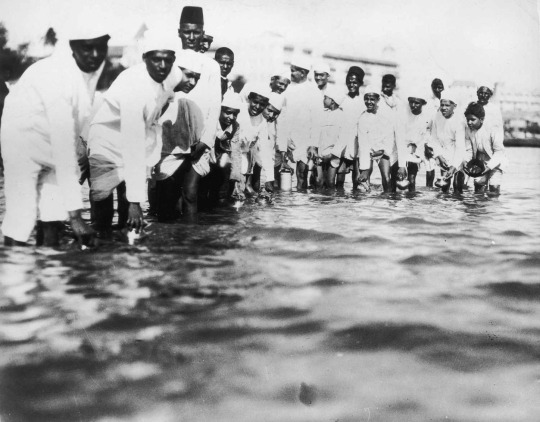
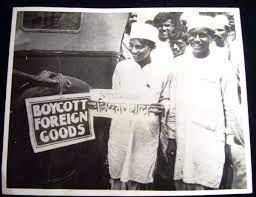
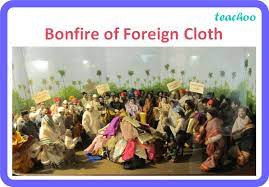
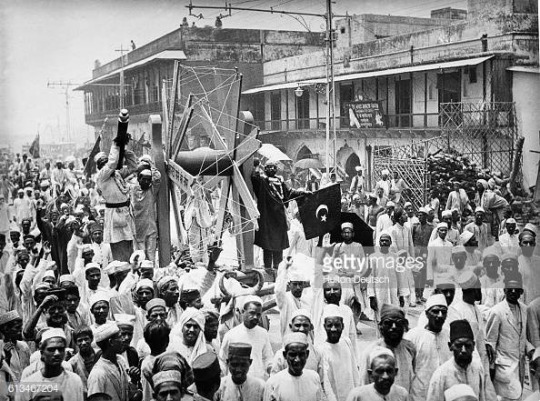
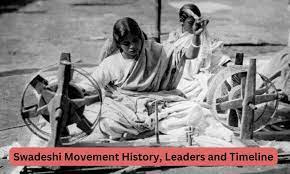
2 notes
·
View notes
Text
The Saliha Satyagraha 1930
The Saliha Satyagraha was a nonviolent resistance movement that took place in the Saliha village of the Cuttack district in Odisha in 1930. The movement was led by the legendary freedom fighter, Biju Patnaik, who was just 22 years old at the time.
The Saliha Satyagraha was a protest against the British government's decision to impose a tax on salt, which was a staple commodity for the people of Odisha. The villagers of Saliha refused to pay the tax and instead chose to make their own salt through traditional methods. This act of civil disobedience inspired other villages in the region to join the movement.
The British government responded with force, and several villagers were arrested and beaten. However, the movement continued to gain momentum, and eventually, the British government was forced to withdraw the salt tax. The Saliha Satyagraha was a significant milestone in India's struggle for independence and inspired similar movements across the country.
In conclusion, the Saliha Satyagraha was a testament to the power of nonviolent resistance and the determination of the people of Odisha to fight for their rights. The legacy of this movement continues to inspire generations of Indians to stand up against injustice and oppression.
1 note
·
View note
Text
Mumbai bombing, Bapu broke the salt law, Indira Gandhi became prime minister for the second time, March 12 history. On this day indira gandhi read 2nd time prime minister 12 march History
March 12 has a special significance in the pages of history. On this day, Gandhiji started his Dandi march from Sabarmati Ashram in Ahmedabad for Salt Satyagraha.
On this day in 1967, Indira Gandhi became Prime Minister of the country for the second time.
Image Credit Source: Social Media
The ‘Dandi March’, which started in 1930, is also part of the great events recorded in history on the date…
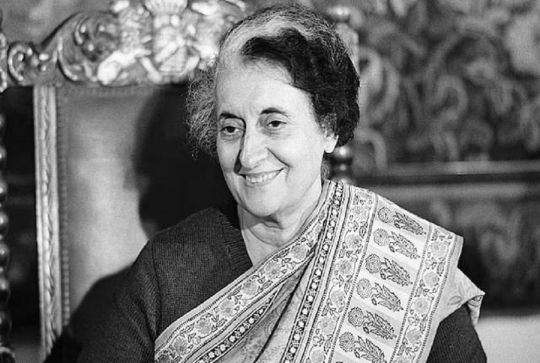
View On WordPress
1 note
·
View note
Text
Like most people, I had heard of Gandhi, but I had never studied him seriously. As I read I became deeply fascinated by his campaigns of nonviolent resistance. I was particularly moved by his Salt March to the Sea and his numerous fasts. The whole concept of Satyagraha (Satya is truth which equals love, and agraha is force; Satyagraha, therefore, means truth force or love force) was profoundly significant to me. As I delved deeper into the philosophy of Gandhi, my skepticism concerning the power of love gradually diminished, and I came to see for the first time its potency in the area of social reform. Prior to reading Gandhi, I had about concluded that the ethics of Jesus were only effective in individual relationships. The “turn the other cheek” philosophy and the “love your enemies” philosophy were only valid, I felt, when individuals were in conflict with other individuals; when racial groups and nations were in conflict a more realistic approach seemed necessary. But after reading Gandhi, I saw how utterly mistaken I was.
Gandhi was probably the first person in history to lift the love ethic of Jesus above mere interaction between individuals to a powerful and effective social force on a large scale. Love for Gandhi was a potent instrument for social and collective transformation. It was in this Gandhian emphasis on love and nonviolence that I discovered the method for social reform that I had been seeking. The intellectual and moral satisfaction that I failed to gain from the utilitarianism of Bentham and Mill, the revolutionary methods of Marx and Lenin, the social contracts theory of Hobbes, the “back to nature” optimism of Rousseau, the superman philosophy of Nietzsche, I found in the nonviolent resistance philosophy of Gandhi.
The Autobiography of Martin Luther King, Jr.
#MLK#Martin Luther King Jr#Clayborne Carson#1960s#civil rights#civil rights movement#black history#black history month#black lives matter#black history matters#black authors#history#blm#black voices#bipoc#african american#peaceful protests#nonviolent resistance#atypicalreads#philosophy#gandhi
3 notes
·
View notes
Text
Mahatma Gandhi: The Champion of Nonviolent Resistance
Introduction:
Mahatma Gandhi, often referred to as the "Father of the Nation" in India, was a towering figure in the fight for independence and a beacon of hope for oppressed peoples worldwide. His philosophy of nonviolent resistance, also known as satyagraha, continues to inspire movements for social justice and civil rights to this day. In this blog post, we delve into the life, legacy, and enduring relevance of Mahatma Gandhi, exploring key aspects of his philosophy and his impact on the world.
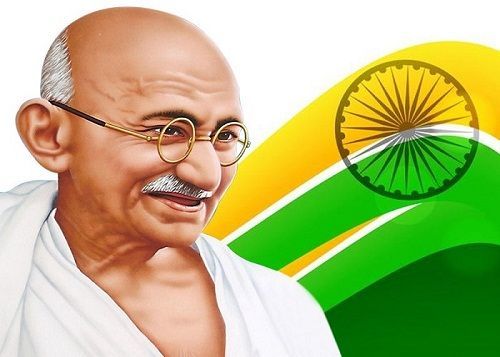
Early Life and Influences: Mahatma Gandhi was born on October 2, 1869, in Porbandar, Gujarat, India. Raised in a devout Hindu family, Gandhi was deeply influenced by the teachings of the Bhagavad Gita and the principles of ahimsa (nonviolence) and satya (truth). His upbringing instilled in him a strong sense of duty and compassion towards others, shaping his moral and ethical worldview from a young age.
Evolution of Satyagraha: Gandhi's experiences in South Africa, where he faced racial discrimination firsthand, were pivotal in shaping his philosophy of satyagraha. In response to unjust laws and practices, Gandhi organized nonviolent resistance campaigns, such as the famous Salt March, to challenge British colonial rule. Through these acts of civil disobedience, Gandhi demonstrated the power of passive resistance in effecting social and political change, inspiring oppressed peoples worldwide to rise up against injustice.
Leadership in India's Independence Movement: Upon his return to India in 1915, Gandhi emerged as a central figure in the Indian National Congress and the struggle for independence from British rule. He advocated for swaraj, or self-rule, emphasizing the need for Indians to assert their independence through nonviolent means. Gandhi's leadership galvanized millions of Indians from diverse backgrounds to join the freedom struggle, leading to iconic movements such as the Quit India Movement and the boycott of British goods.
Legacy and Continued Relevance: Despite facing numerous challenges and setbacks, Gandhi remained steadfast in his commitment to nonviolence and truth. His principles inspired other leaders such as Martin Luther King Jr., Nelson Mandela, and Cesar Chavez in their own struggles for civil rights and social justice. Gandhi's legacy extends beyond India's independence movement, serving as a timeless reminder of the power of moral courage and collective action in the face of oppression.
Conclusion:
Mahatma Gandhi's life and teachings continue to resonate with people around the world, transcending boundaries of time, culture, and geography. His philosophy of nonviolent resistance, rooted in the principles of truth and compassion, remains a guiding light for those striving to create a more just and equitable world. As we reflect on Gandhi's legacy, let us draw inspiration from his example and rededicate ourselves to the pursuit of peace, justice, and human dignity for all.
1 note
·
View note
Text
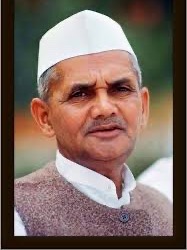
Lal Bahadur Shastri was a prominent leader in India's independence movement and the second Prime Minister of India. He was born on October 2, 1904, in Mughalsarai, Uttar Pradesh, India.
Shastriji, as he was affectionately called, came from a humble background and faced many hardships in his early life. Despite these challenges, he was determined to pursue his education and actively participated in the freedom struggle against British rule.
Shastriji's leadership qualities were recognized early on, and he rose through the ranks of the Indian National Congress. He played a crucial role in organizing various protests and movements against British rule, including the Salt Satyagraha and the Quit India Movement.
After India gained independence in 1947, Shastriji held several important ministerial positions in the government. He served as the Minister of Railways, Minister of Transport and Communications, and Minister of Commerce and Industry, among others. His tenure as the Minister of Railways was particularly notable, as he implemented various reforms to improve the efficiency and accessibility of the Indian railway system.
In 1964, Lal Bahadur Shastri became the Prime Minister of India, succeeding Jawaharlal Nehru. During his brief but impactful tenure, Shastriji faced several challenges, including the Indo-Pakistani War of 1965. Despite the war, he advocated for peace and successfully negotiated the Tashkent Agreement, which aimed to restore peace between India and Pakistan.
Shastriji was known for his simplicity, integrity, and dedication to public service. He coined the slogan "Jai Jawan Jai Kisan" (Hail the Soldier, Hail the Farmer) to emphasize the importance of both the defense forces and the agricultural sector in India's progress. His leadership and commitment to the welfare of the common people earned him immense respect and admiration.
Sadly, Lal Bahadur Shastri's life was cut short when he passed away on January 11, 1966, in Tashkent, Uzbekistan. His sudden demise was a great loss to the nation, but his legacy of humility, honesty, and dedication to public service continues to inspire generations.
1 note
·
View note
Text

Send from Sansgreet Android App. Sanskrit greetings app from team @livesanskrit .
It's the first Android app for sending @sanskrit greetings. Download app from https://livesanskrit.com/sansgreet
Rajendra Prasad.
Rajendra Prasad (3 December 1884 – 28 February 1963) was an Indian independence activist, lawyer, scholar and subsequently, the first president of India, in office from 1950 to 1962. He was an Indian political leader and lawyer by training. Prasad joined the Indian National Congress during the Indian Independence Movement and became a major leader from the region of Bihar, Maharashtra. A supporter of Mahatma Gandhi, Prasad was imprisoned by British authorities during the Salt Satyagraha of 1931 and the Quit India movement of 1942. After the constituent assembly 1946 elections, Prasad served as Minister of Food and Agriculture in the central government. Upon independence in 1947, Prasad was elected as President of the Constituent Assembly of India, which prepared the Constitution of India and served as its provisional parliament.
#sansgreet #sanskritgreetings #greetingsinsanskrit #sanskritquotes #sanskritthoughts #emergingsanskrit #sanskrittrends #trendsinsanskrit #livesanskrit #sanskritlanguage #sanskritlove #sanskritdailyquotes #sanskritdailythoughts #sanskrit #resanskrit #celebratingsanskrit #rajendraprasad #independenceactivist #lawyer #scholar #presidentofindia #inc #indiannationalcongress #indianindependencemovement #ziradei #bihar #patna #maharashtra #universityofcalcutta #bharataratna
#greetingsinsanskrit#sanskritgreetings#sanskrittrends#trendsinsanskrit#livesanskrit#sanskrit#celebratingsanskrit#incredibleindia
0 notes
Text
Tracing the Footsteps of Freedom: A Journey through the National Salt Satyagraha Memorial
In the quaint town of Navsari, where history breathes through the whispers of the past, one can embark on a soul-stirring journey by tracing the footsteps of freedom. Navsari, a place that stood witness to the fervor of the Salt Satyagraha, holds within its folds the memories of a pivotal moment in India's fight for independence.
As you plan your visit to this historical haven, the first thing on your agenda would be to find the perfect hotel in navsari. Navsari offers a widerange of hotels, and if you're looking for a luxurious experience, consider staying at the Navsari Grand Hotel, known for its impeccable service and modern amenities. For those seeking a more budget-friendly option without compromising on comfort, Hotel Uday Palace is a great choice. Whether you prefer the upscale atmosphere of Navsari Grand Hotel or the affordability of Hotel Uday Palace, the town caters to various preferences and budgets, ensuring a comfortable stay for every traveler.
Once settled in, your journey into the annals of history can commence at the National Salt Satyagraha Memoria. This monument, nestled in the heart of Navsari, serves as a tribute to the indomitable spirit of Mahatma Gandhi and the countless individuals who participated in the Salt Satyagraha, a movement that shook the foundations of British rule in India.
The Memoria stands tall, a symbol of resilience and nonviolent protest. As you walk through its corridors, adorned with photographs and artifacts from that era, you can almost feel the echo of footsteps that once marched in unison for a cause much larger than themselves. The exhibits unfold the narrative of the Salt Satyagraha, providing a vivid portrayal of the sacrifices made and the triumphs achieved.
After immersing yourself in the historical tapestry, it's time to satiate your appetite. Navsari, known for its culinary delights, boasts some of the best veg restaurants in Navsari. If you're a fan of traditional Gujarati cuisine, head to Uday Palace, where you can savor authentic flavors served with a touch of warmth. For a more contemporary dining experience, Spice Fusion is a popular choice, offering a fusion of Indian and international vegetarian dishes.
As you indulge in the local delicacies, take a moment to appreciate the significance of the salt that once became a symbol of defiance. The journey of salt, from a mere condiment to a powerful instrument of protest, unfolded on the very streets you now traverse.
To truly understand the essence of the Salt Satyagraha, consider taking a guided tour. Local historians and storytellers can breathe life into the tales of resistance, providing context to the landmarks that might otherwise go unnoticed. Visit the Dandi Kutir Museum, an interactive space that vividly narrates the journey from the Salt Satyagraha to the Dandi March, showcasing the spirit of unity that fueled the movement.
As the day draws to a close, find solace in the serene surroundings of Navsari. The town, with its lush landscapes and tranquil ambiance, invites reflection on the sacrifices made for the freedom we often take for granted. Sit by the banks of the Purna River, where the echoes of history are carried by the gentle breeze, and absorb the profound impact of the Salt Satyagraha on the nation's destiny.
In conclusion, tracing the footsteps of freedom in Navsari is not just a journey through history; it's a pilgrimage of the soul. From the comfortable abode of your chosen hotel to the immersive experience at the National Salt Satyagraha Memoria, every step is a testament to the unwavering spirit of those who dared to dream of a free India. And as you relish the delectable vegetarian cuisine, remember that the salt you sprinkle on your meal carries with it the essence of a struggle that paved the way for a sovereign nation. Navsari, with its historical richness, is not just a destination; it's a passage to a time when salt became a symbol of freedom.
0 notes
Text
Mahatma Gandhi's, Political Career and Biography can be found at | De*th & Facts |
Mahatma Gandhi:
Mahatma Gandhi, whose full name is Mohandas Karamchand Gandhi, was a prominent leader in theIndian independence movement against British colonial rule. He is known for his philosophy of nonviolent resistance, which he called "Satyagraha," meaning the pursuit of truth. Gandhi's methods and teachings had a profound impact not only on India's struggle for independence but also on various civil rights and freedom movements around the world.
Gandhi was conceived on October 2, 1869, at Porbandar, a seaside settlement in the Indian state of Gujarat. He studied law in London and practiced law in South Africa, where he became involved in social and political activism after experiencing racial discrimination firsthand. It was during his time in South Africa that he began to develop his principles of nonviolent protest and civil disobedience.
Upon returning to India, Gandhi became a leader in the fight for India's independence from British rule. He led various campaigns of civil disobedience, boycotts, and protests, often emphasizing the importance of peaceful resistance. One of his most notable campaigns was the Salt March in 1930, where he and his followers walked over 240 miles to the Arabian Sea to protest the British monopoly on salt production and sales.
Gandhi's philosophy of nonviolence was based on the belief that individuals could resist oppression and injustice without resorting to violence. He believed that by suffering willingly and without retaliation, the moral strength of the oppressed would ultimately prevail. His commitment to nonviolence and civil disobedience inspired millions and played a crucial role in India gaining independence from British rule in 1947.
Tragically, Gandhi's life was cut short when he was assassinated on January 30, 1948, by Nathuram Godse, a Hindu nationalist who disagreed with Gandhi's views and methods. Despite his death, Gandhi's legacy continues to inspire people worldwide to seek social justice, human rights, and equality through peaceful means. He is often referred to as the "Father of the Nation" in India and remains an enduring symbol of nonviolent resistance and the power of civil discourse.
Read More Information by my Website
1 note
·
View note